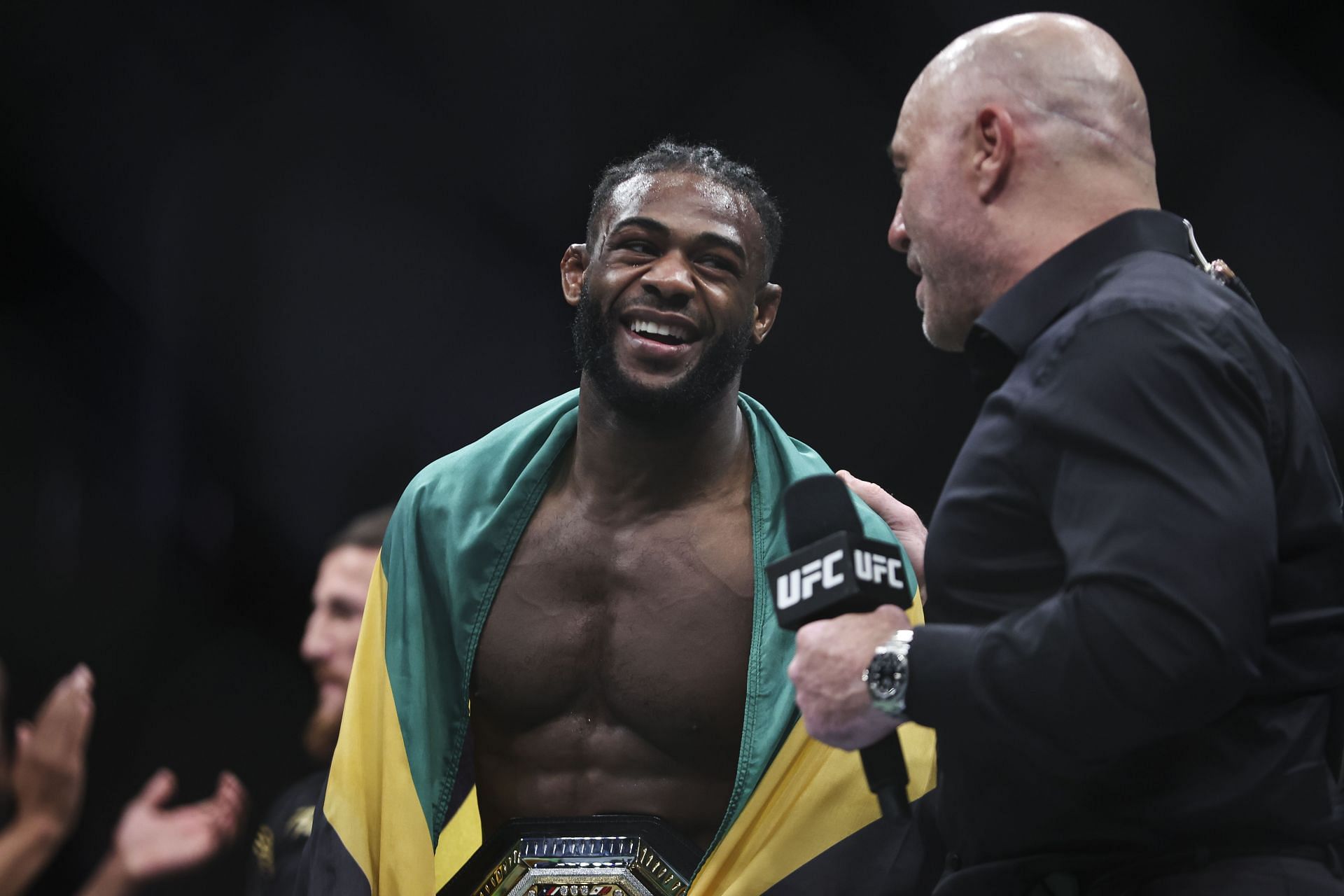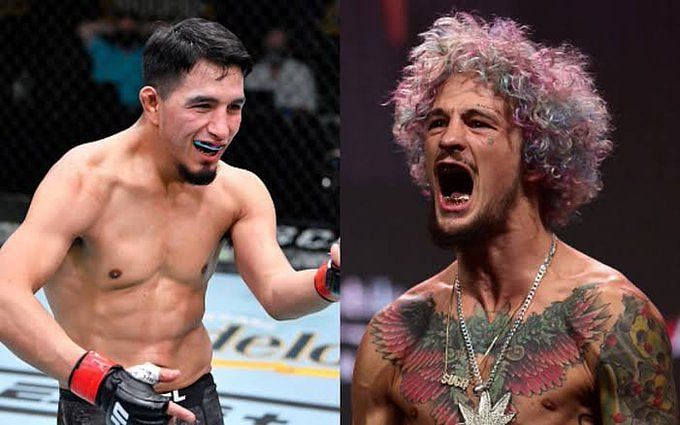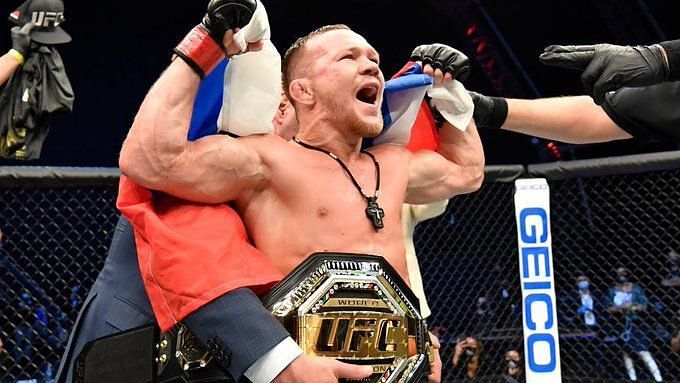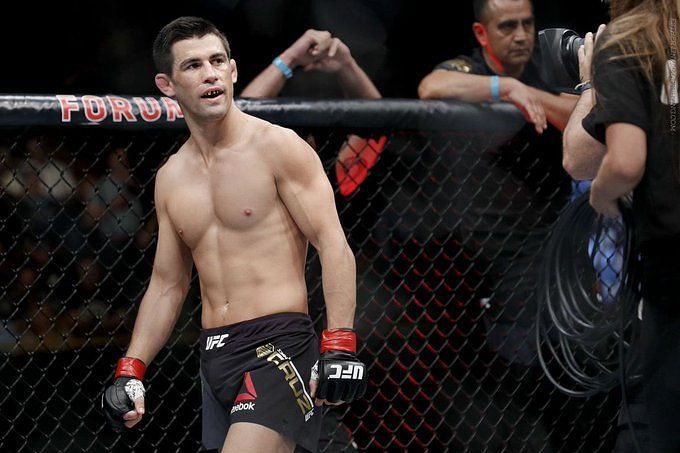
5 reasons why the UFC bantamweight division is deeper than lightweight
For one reason or another, certain UFC divisions are deeper and deadlier than others. For example, at the moment, the UFC heavyweight division is among the shallowest weight classes in the promotion. Only the UFC women's featherweight division lacks more depth than the 265lbs weight class.
In men's MMA, heavier weight classes typically suffer from a lack of elite competition compared to lighter divisions.
Often-times, the UFC lightweight division is heralded as the promotion's deepest category in terms of talent. While there is certainly credence to that notion, this list poses a counterargument that the UFC bantamweight division is arguably the deepest weight class in the promotion.
#5. Bantamweight has more fighters in their physical primes
Many things can determine how deep a weight class is. One of those things is the average age of fighters competing in a specific division. Typically, fighters plateau around their early thirties and enter a slow decline in their mid-thirties before undergoing a more dramatic decline in their late thirties. As a result, older fighters typically struggle in most weight classes.
The only weight classes wherein older UFC fighters consistently do well barring exceptions to the norm are heavyweight and light heavyweight. Thus, the younger a division is, the deeper it is likely to be since it means that it is too competitive for older fighters to remain successful.
While the lightweight division is certainly deep, only two fighters in their twenties are ranked in the top 10. By contrast, the bantamweight division features four fighters in their twenties. Not only do younger fighters possess superior physical attributes due to being in their athletic primes, but they undergo stylistic evolution as the game changes and have time to learn from their contemporaries.
Meanwhile, older fighters are usually too set in their ways and struggle to change their approaches.
#4. 135ers are more well-rounded
The UFC bantamweight division features more well-rounded fighters.
Jon Jones (Light heavyweight) and Demetrious Johnson (Flyweight) are widely regarded as two of the most skilled mixed martial artists in the sport's history. Their mastery over every facet of MMA, like wrestling, Brazilian jiu-jitsu and striking is without question.
Thus, the more well-rounded a fighter is, the deeper their skill-set is. While the top 10 lightweight rankings certainly feature all-around skill-sets like those possessed by generalists such as Rafael dos Anjos, there are serious gaps in more fighters there than at bantamweight.
Beneil Dariush's striking is worse than almost everybody in the bantamweight top 10. Justin Gaethje has no Brazilian jiu-jitsu skills to speak of.
Rafael Fiziev poses almost no wrestling or grappling threat. Meanwhile, almost every top 10 bantamweight possesses serviceable skills in every facet of MMA. Aljamain Sterling is believed to be the worst striker among the top 10 bantamweights. Yet even his kicking game is more technical and serves a strategic purpose compared to the worst strikers at lightweight.
At bantamweight, there are far less stylistically favorable matchups for most fighters cracking the top 10. At least not in as overt a sense as Justin Gaethje's obvious weakness in grappling, rendering Brazilian jiu-jitsu an obvious path to victory against him. At bantamweight, those vulnerabilities are more subtle and nuanced.
#3. More championship-caliber fighters
The top 10 rankings in the bantamweight division feature more championship level fighters. While the UFC lightweight division features standout fighters like Islam Makhachev, Beneil Dariush, Mateusz Gamrot, Arman Tsarukyan and Rafael Fiziev, only Charles Oliveira, Rafael dos Anjos, Dustin Poirier and Justin Gaethje have tasted UFC gold.
Furthermore, 'The Diamond' and 'The Highlight Reel' have only ever been interim champions. Meanwhile, 'RDA' is no longer an elite lightweight despite his past championship success as he has no wins over the current top 10 lightweights. By comparison, the UFC bantamweight division is different.
Aljamain Sterling reigns as the undisputed bantamweight champion. Petr Yan, T.J. Dillashaw and Dominick Cruz are all former undisputed champions. Until his recent retirement, José Aldo was another former undisputed champion, albeit at featherweight.
#2. There are more all-time greats at bantamweight
Other than Charles Oliveira, anyone else in contention for the title of greatest lightweight of all time is retired. Both Khabib Nurmagomedov and B.J. Penn have walked away from the sport. This is not the case in the bantamweight division.
Prior to his crushing loss to Marlon Vera, Dominick Cruz was likely one win away from securing a title fight. 'The Dominator' is widely regarded as the greatest bantamweight of all time. Another candidate for the title is T.J. Dillashaw, who is scheduled to face Aljamain Sterling in the co-main event of UFC 280 in a championship bout. Before his recent retirement, José Aldo— arguably the greatest featherweight of all time—competed as a bantamweight.
Both Dillashaw and Cruz pose stiff tests for any up-and-comers who intend to stake their claim for a title fight. 'Chito' recently defeated Cruz to earn his status as a top 5 bantamweight. Meanwhile, T.J. Dillashaw defeated Cory Sandhagen to earn his title fight against Aljamain Sterling. No such all-time great barrier exists at lightweight.
#1. There are no easy matchups in UFC's 135-pound division
While there aren't necessarily easy matchups at lightweight, there are certainly fighters who have very obvious tendencies that can be preyed upon. In the top 15 of the bantamweight division, there are no mixed martial artists who have declined to such a degree that they can be used as launch pads for prospects.
While the likes of Frankie Edgar, Pedro Munhoz and Rob Font are all on losing streaks, all three fighters remain troubling foes for surging contenders. Rob Font outlanded Marlon Vera in their bout, but was simply unable to overcome the difference in punching power.
Similarly, Frankie Edgar caused problems for 'Chito' with his wrestling-striking combination before being thwarted by Marlon Vera's power. The situation is different at lightweight. The years of damage Dan Hooker sustained have crippled his ability to absorb blows and have slowed him down considerably.
The legendary Tony Ferguson, now the No.15 lightweight, is crippled by age. While his fighting style is more or less the same, he's been so slowed by age that opponents can predict when he will spin for an elbow after he steps out of position on a punch. Even Nate Diaz, a fairly slow fighter himself, was able to evade 'El Cucuy' every time he tried to spin.




